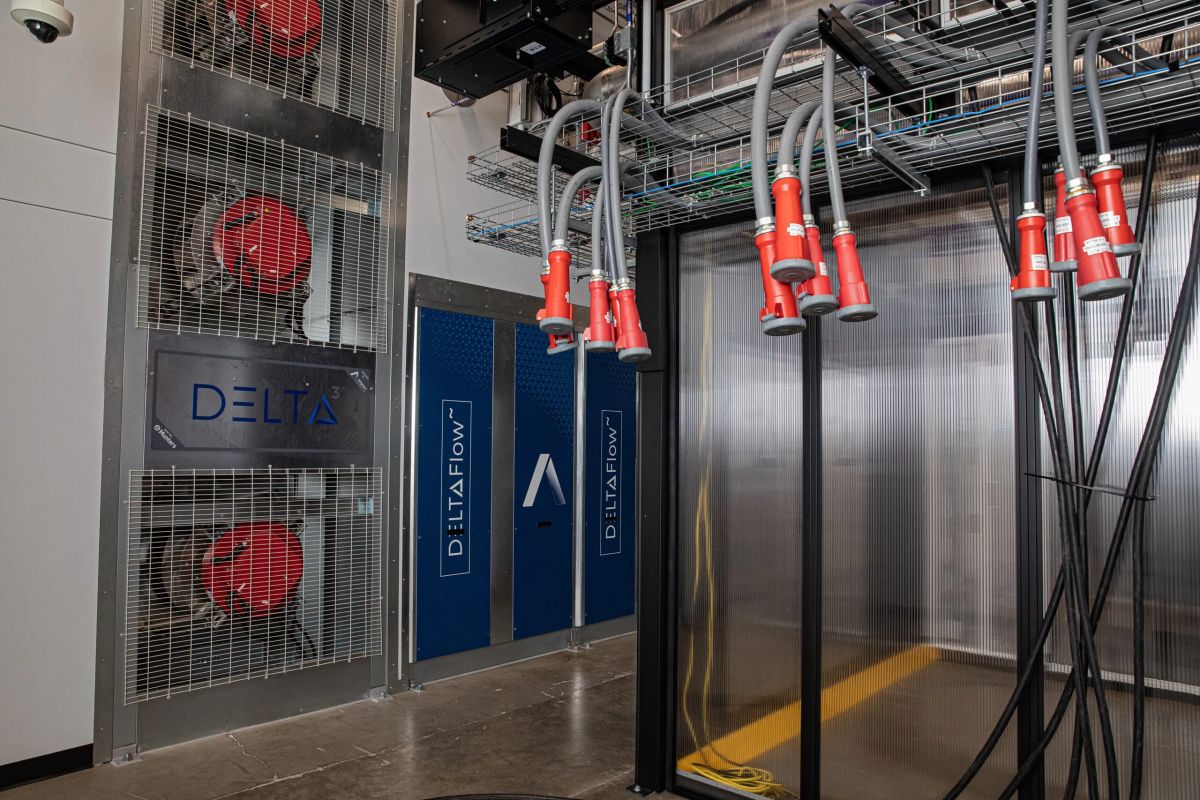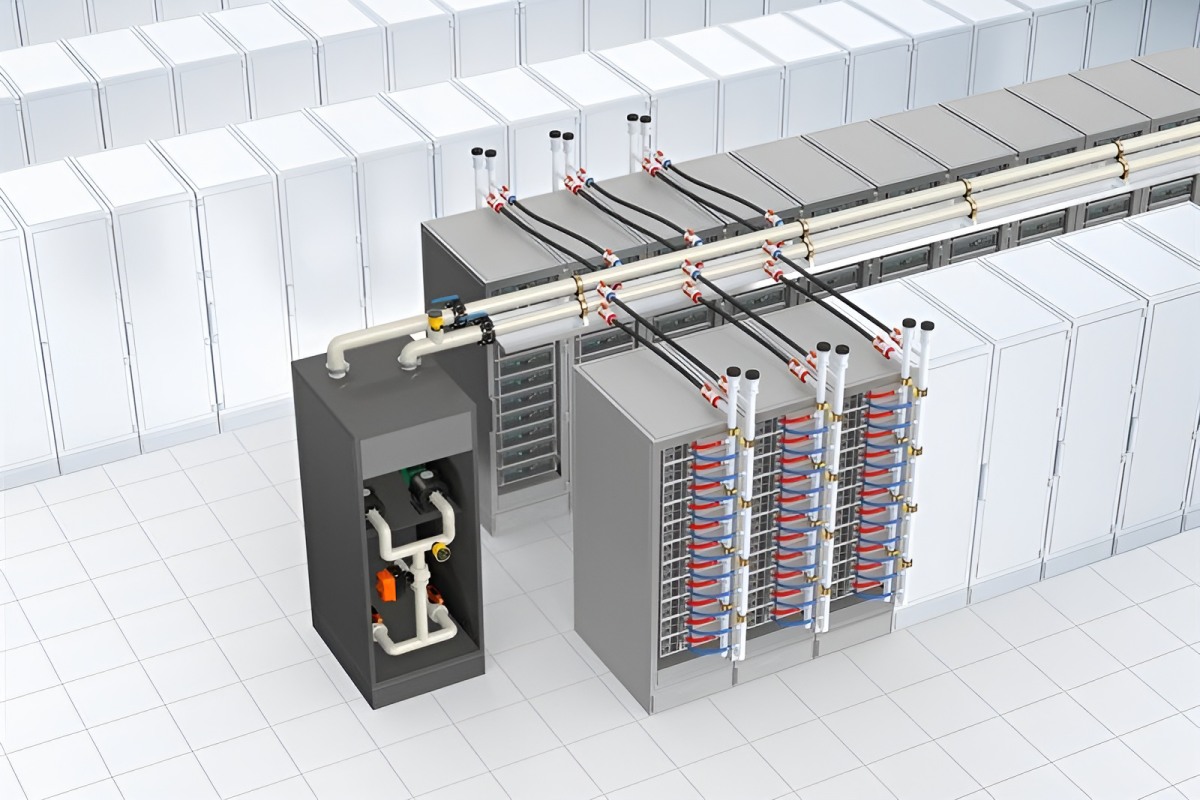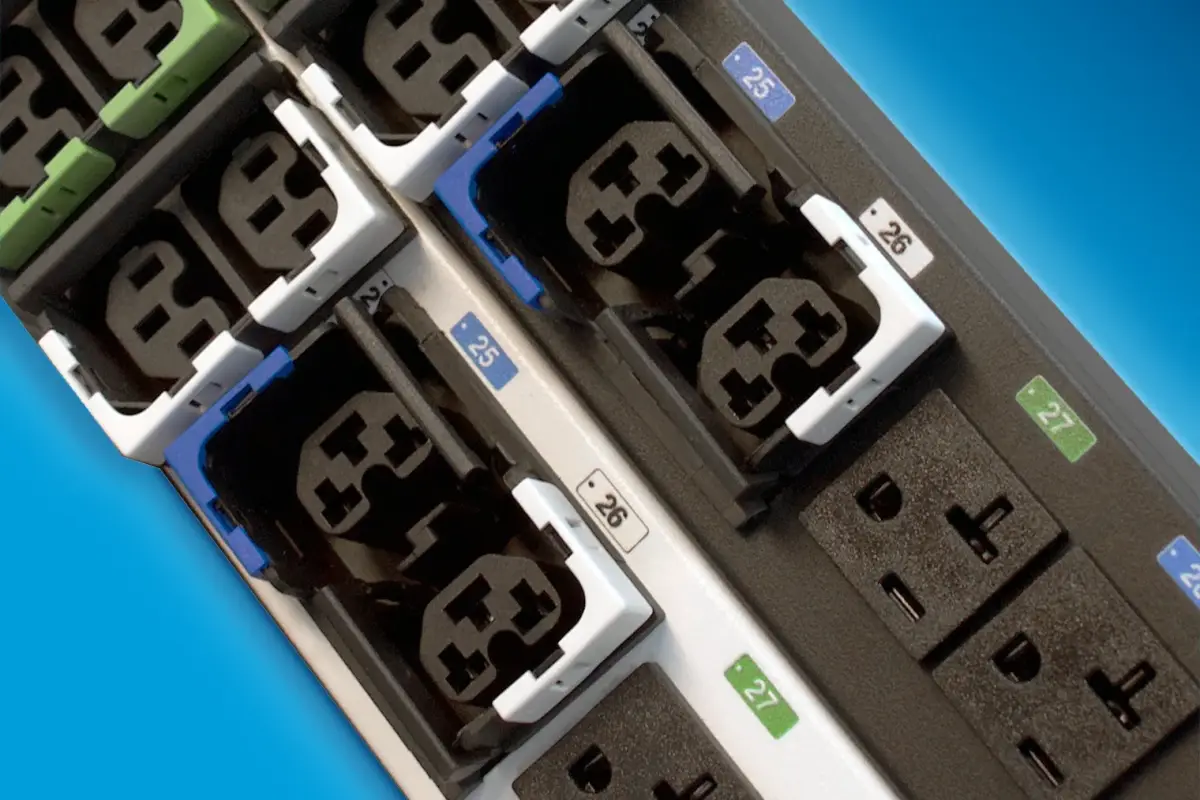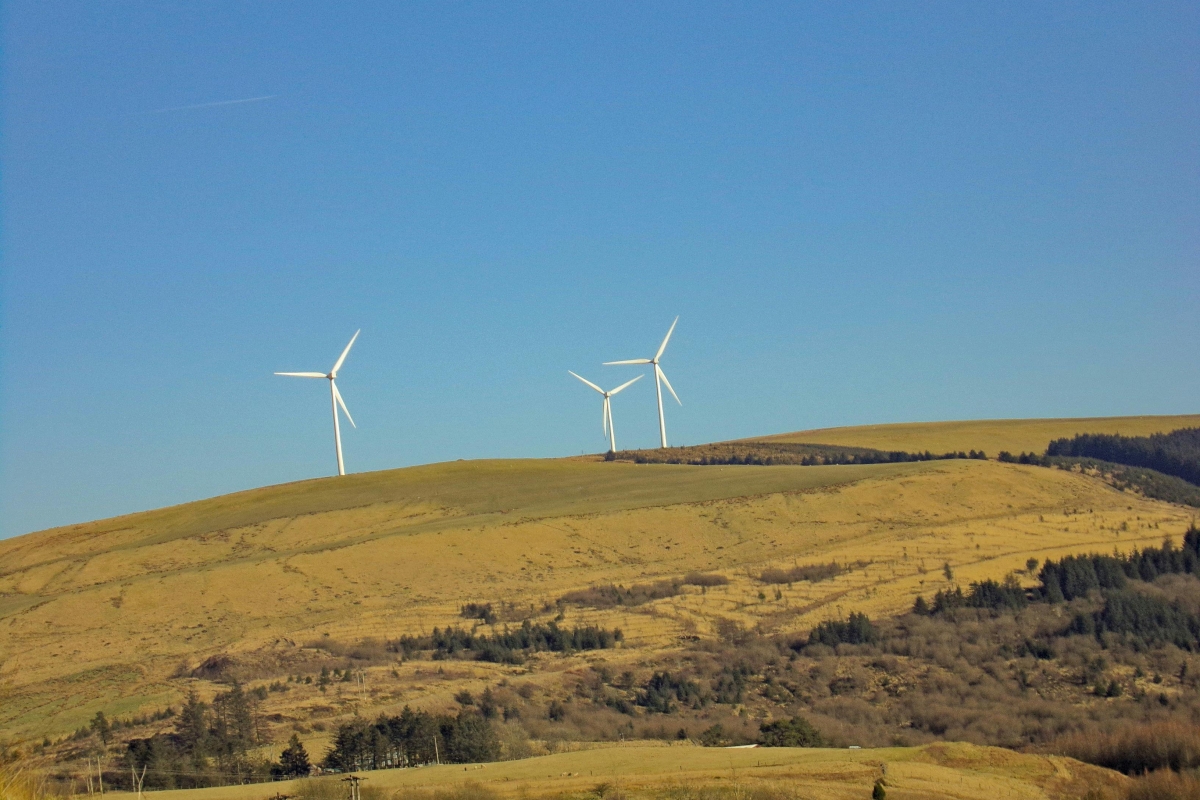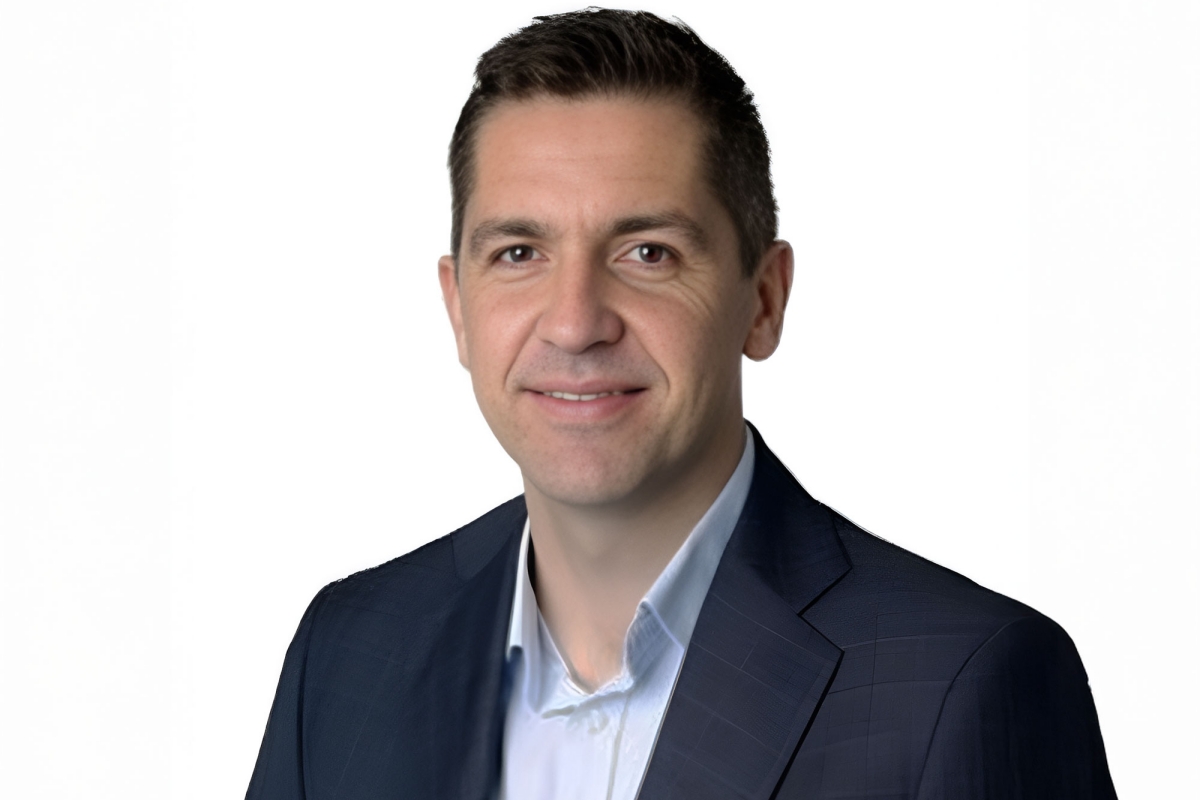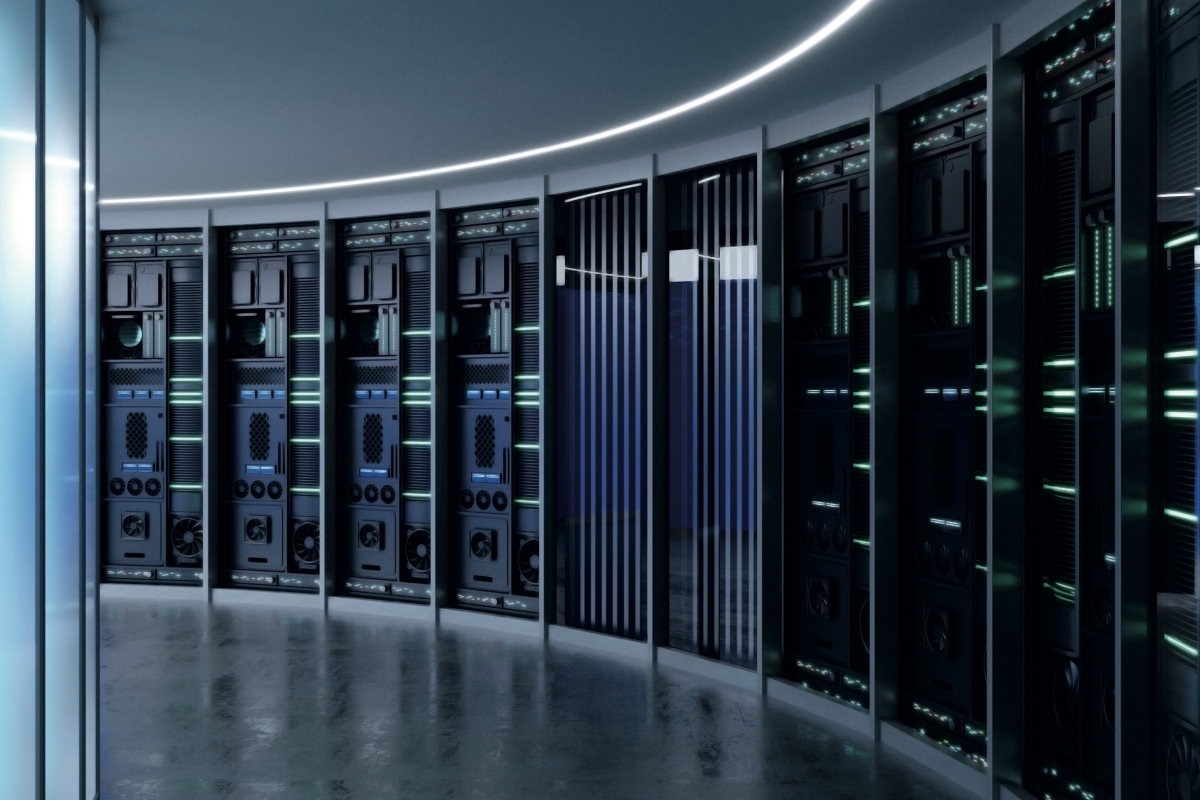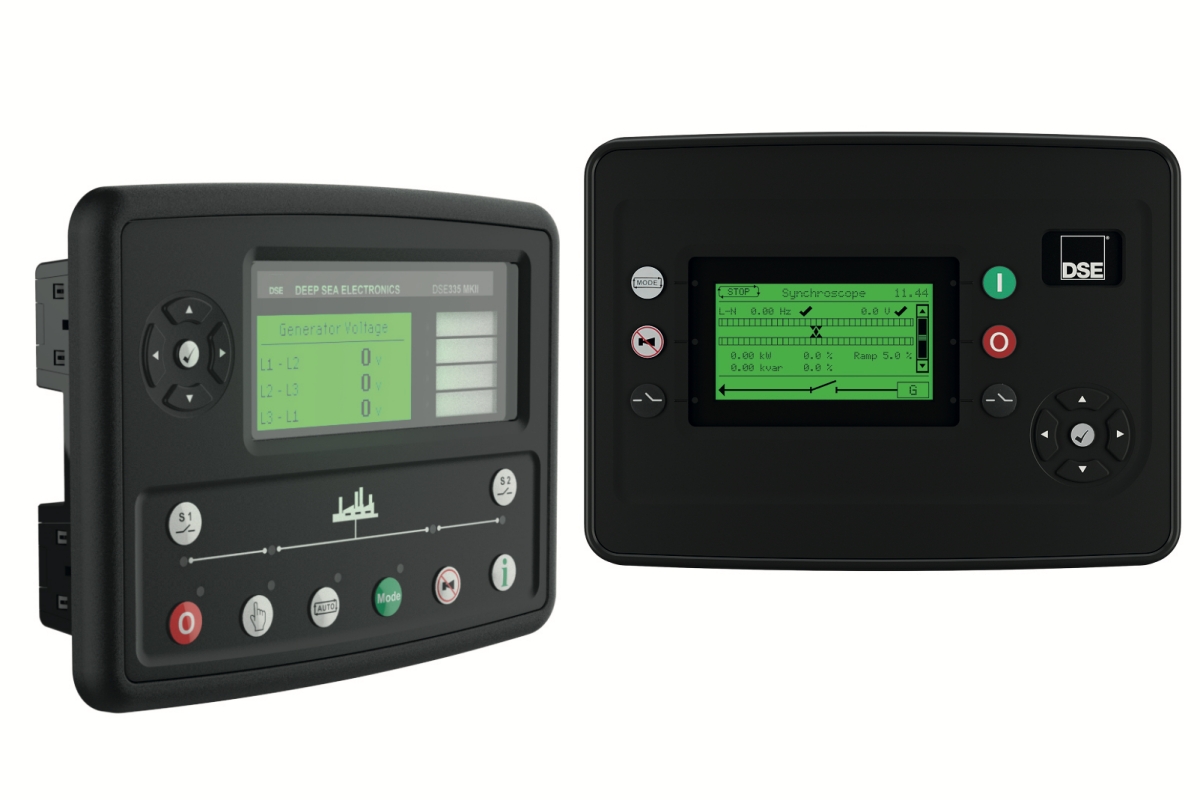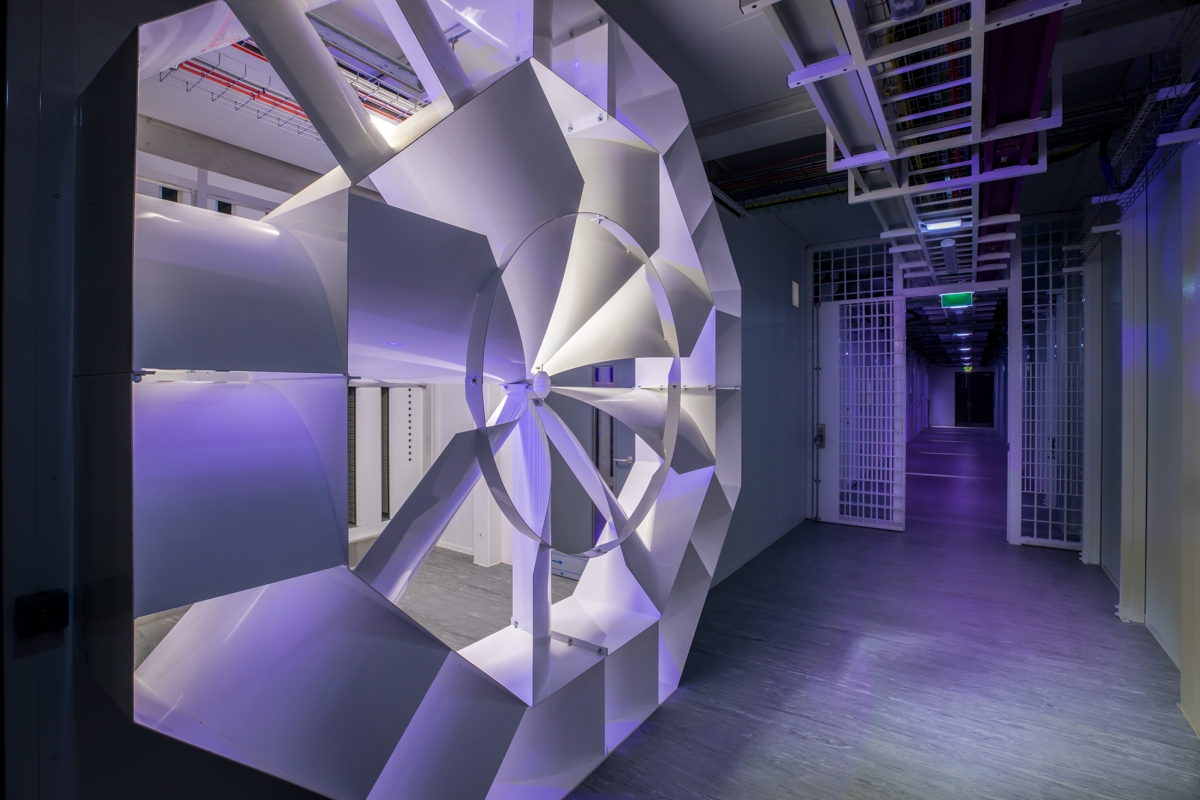Innovations in Data Center Power and Cooling Solutions
Data Centre Infrastructure News & Trends
Innovations in Data Center Power and Cooling Solutions
Liquid Cooling Technologies Driving Data Centre Efficiency
Aligned collaborates with Divcon for its Advanced Cooling Lab
Divcon Controls, a US provider of building management systems and electrical power monitoring systems for data centres and mission-critical facilities, has announced its role in the development of Aligned Data Centers’ new Advanced Cooling Lab in Phoenix, Arizona, where it served as the controls vendor for the facility.
The project marks a step forward in the design and management of liquid-cooled infrastructure to support artificial intelligence (AI) and high-performance computing (HPC) workloads.
The lab, which opened recently, is dedicated to testing advanced cooling methods for GPUs and AI accelerators. It reflects a growing need for more efficient thermal management as data centre density increases and energy requirements rise.
“As the data centre landscape rapidly evolves to accommodate the immense power and cooling requirements of AI and HPC workloads, the complexities of managing mechanical systems in these environments are escalating,” says Kevin Timmons, Chief Executive Officer of Divcon Controls.
“Our involvement with Aligned Data Centers' Advanced Cooling Lab has provided us with invaluable experience at the forefront of liquid cooling technology.
"We are actively developing and deploying advanced control platforms that not only optimise the performance of these systems, but also contribute to long-term sustainability goals.”
Divcon Controls has focused its work on managing the added complexity that liquid cooling introduces, including:
• Precise thermal control — Managing coolant flow, temperature, and pressure to improve heat transfer efficiency and reduce energy consumption.
• Integration with mechanical infrastructure — Coordinating the performance of pumps, heat exchangers, cooling distribution units (CDUs), and leak detection systems within a unified control framework.
• Load-responsive adjustment — Adapting cooling output in real time to match fluctuating IT loads, helping maintain optimal operating conditions while limiting energy waste.
• Visibility and predictive maintenance — Providing operators with detailed analytics on system performance to support proactive maintenance and longer equipment life.
• Support for hybrid environments — Enabling the transition between air and liquid cooling within the same facility, as demonstrated at Aligned’s lab.
As more facilities transition to hybrid and liquid-cooled architectures, Divcon Controls says it is focusing on delivering control systems that enhance energy efficiency, reduce operational risk, and ensure long-term asset reliability.
“Our collaboration with industry leaders like Aligned Data Centers underscores our commitment to innovation and to solving the most pressing challenges in data centre infrastructure,” continues Kevin.
“Divcon Controls is proud to be at the forefront of developing intelligent control platforms for the next generation of high-density, AI-powered data centres, with environmental performance front of mind.”
For more from Aligned, click here.
Joe Peck - 29 July 2025
Data Centre Infrastructure News & Trends
Innovations in Data Center Power and Cooling Solutions
Liquid Cooling Technologies Driving Data Centre Efficiency
GF introduces first-ever full-polymer Quick Connect Valve
The Quick Connect Valve 700 is a patented dual-ball valve engineered with the aim of enhancing safety, efficiency, and sustainability in Direct Liquid Cooling (DLC) systems.
The company claims that, "as the first all-polymer quick connect valve for data centre applications, it is 50% lighter and facilitates 25% better flow compared to conventional metal alternatives while offering easy, ergonomic handling."
As demand for high-density, high-performance computing grows, DLC is reportedly becoming a preferred method for thermal management in next-generation data centres.
By transporting coolant directly to the chip, DLC can improve thermal efficiency compared to air-based methods. A key component in this setup is the Technology Cooling System (TCS), which distributes coolant from the Cooling Distribution Unit (CDU) to individual server racks.
To support this shift, manufacturer of plastic piping systems, valves, and fittings GF has developed the Quick Connect Valve 700, a fully plastic, dual-ball valve engineered for direct-to-chip liquid cooling environments.
Positioned at the interface between the main distribution system and server racks, the valve is intended to enable fast, safe, and durable coolant connections in mission-critical settings.
Built on GF’s Ball Valve 546 Pro platform, the Quick Connect Valve 700 features two identical PVDF valve halves and a patented dual-interlock lever.
This mechanism ensures the valve can only be decoupled when both sides are securely closed, aiming to minimise fluid loss and maximise operator safety during maintenance. Its two-handed operation further reduces the risk of accidental disconnection.
The valve is made of corrosion-free polymer, which is over 50% lighter than metal alternatives and provides a UL 94 V-0 flammability rating.
Combined with the ergonomic design of its interlocking mechanism, the valve is, according to the company, easy to handle during installation and operation.
At the same time, its full-bore valve design seeks to ensure an optimal flow profile and a reduced pressure drop of up to 25% compared to similar metal products.
The product has a minimum expected service life of 25 years.
“With the Quick Connect Valve 700, we’ve created a critical link in the DLC cooling loop that’s not only lighter and safer, but more efficient,” claims Charles Freda, Global Head of Data Centers at GF.
“This innovation builds on our long-standing thermoplastic expertise to help operators achieve the performance and uptime their mission-critical environments demand.”
The Quick Connect Valve 700 has been assessed with an Environmental Product Declaration (EPD) according to ISO 14025 and EN 15804.
An EPD is a standardised, third-party verified document that uses quantified data from Life Cycle Assessments to estimate environmental impacts and enable comparisons between similar products.
For more from GF, click here.
Joe Peck - 28 July 2025
Data Centre Infrastructure News & Trends
Innovations in Data Center Power and Cooling Solutions
Sponsored
Whitepaper: Can AI solve the data centre energy paradox?
As the global demand for data continues to surge, data centres are rapidly scaling up, driven in large part by artificial intelligence (AI) and machine learning. Yet, whilst AI is accelerating innovation, it is also intensifying the energy challenge facing operators and infrastructure providers worldwide.
In a new whitepaper from Hitachi Energy, the company explores this very paradox: can AI help to solve the sustainability and efficiency issues that it, in part, is responsible for creating?
The technical brief, entitled Powering data centres sustainably in an AI world, delves into AI’s growing influence across the digital infrastructure sector, its impact on energy demand, and how it could enable a more efficient, sustainable future.
In particular, it examines AI’s potential to optimise power consumption, streamline cooling strategies, and support smarter energy distribution across increasingly complex data centre estates.
It also considers how AI can contribute to the broader clean energy transition, including integration with renewable energy sources and smarter grid interactions, among other key issues which are essential as the industry faces mounting pressure to align with global net zero goals.
For data centre owners, operators, and energy stakeholders alike, the whitepaper offers timely insights into a future where AI could become both the driver and the solution for sustainable digital growth.
You can read the full whitepaper here.
For more from Hitachi, click here.
Joe Peck - 25 July 2025
Data Centre Infrastructure News & Trends
Innovations in Data Center Power and Cooling Solutions
News
Products
Chatsworth launches new eConnect PDUs
Chatsworth Products (CPI), a US-based manufacturer of IT infrastructure equipment, has launched a new addition to its eConnect Power Distribution Unit (PDU) portfolio, introducing a QuadLock outlet design that the company says provides improved outlet compatibility and power reliability for high-density, high-performance data centres.
The new eConnect PDUs with QuadLock outlets aim to support a range of infrastructure requirements, including AI- and GPU-based computing environments, as well as liquid-cooled systems. The units are designed to enhance adaptability, reduce operational risk, and streamline deployment by integrating four outlet types - C13, C15, C19, and C21 - within a single chassis.
CPI’s new offering supports all four outlet types with built-in locking mechanisms, without the need for proprietary power cords.
“With data centres facing rapid technological advancements, including the proliferation of GPU and AI workloads, infrastructure flexibility and power reliability are more critical than ever,” argues Ashish Moondra, Senior Director of Electronics and Software at CPI.
“eConnect PDUs with QuadLock Outlets empower our customers to quickly adapt to changing equipment requirements without sacrificing performance or uptime.”
Key features of the eConnect PDU with QuadLock Outlets include:
• Four-outlet compatibility — One unit supports C13, C15, C19, and C21 outlet types, increasing equipment compatibility and reducing the need for multiple PDU models.
• Secure locking mechanism — Each outlet includes integrated locking to prevent accidental disconnections, including in high-vibration or high-traffic environments.
• High-power support — Systems can deliver up to 57.5kW per cabinet with 100A input capacity, supporting intensive workloads.
• Colour-coded outlets — Aids in load balancing and troubleshooting by making outlet identification easier.
• Flexible integration — Compatible with all six CPI eConnect PDU models - Basic, Metered, Monitored, Monitored Pro, Switched, and Switched Pro - and can be pre-installed into CPI cabinets for quicker deployment.
The modular design is intended to reduce PDU redundancy, simplify inventory management, and support a scalable approach to data centre infrastructure. CPI also highlights the product’s contribution to sustainability goals by reducing waste through long-term compatibility and reusability.
The new PDUs will be available from 7 July 2025 through CPI’s global network of distribution partners.
Joe Peck - 23 July 2025
Data Centre Build News & Insights
Innovations in Data Center Power and Cooling Solutions
Renewables and Energy: Infrastructure Builds Driving Sustainable Power
Sustainable Infrastructure: Building Resilient, Low-Carbon Projects
Allegro argues case for sustainable energy storage
As data centre expansion accelerates to meet the demands of AI, cryptocurrencies, and cloud services, Australia-based developer Allegro Energy is arguing for the relevance and applicability of its long-duration energy storage (LDES) technology in "enabling scalable, sustainable energy solutions tailored to the unique needs of modern data centres."
With data centres operating on consistent, high-load profiles, they are uniquely positioned to benefit from a clean power strategy that combines renewable generation with long-duration energy storage.
Allegro Energy’s modular, scalable, and environmentally-friendly battery systems, according to the company, "present a solution that overcomes the prohibitive cost, scalability, and sustainability challenges associated with traditional lithium-ion or vanadium-based systems."
• Modularity & scalability — Allegro’s LDES systems are designed to grow in parallel with a data centre’s needs, allowing incremental investment and deployment.
• Renewable compatibility — The system pairs with solar and wind energy, aiming to help data centres navigate grid volatility and peak pricing while advancing towards net zero carbon targets.
• Climate-friendly storage chemistry — The water-based electrolyte technology is not resource-constrained, hoping to offer a low-impact alternative that can be deployed at scale.
“The exponential growth of generative AI, cloud computing, and digital services has made energy a critical chokepoint in data infrastructure,” says Thomas Nann, CEO of Allegro Energy.
“We believe the future of high-performance computing does not need to come at the cost of the planet. With our technology, data centres can be powered entirely by renewables, supported by reliable, cost-effective long-duration storage.”
Allegro Energy’s proprietary, locally manufactured micro-emulsion electrolyte technology eliminates the need for scarce or rare metals, reducing fire risk and allowing for extended storage durations at a lower cost.
Joe Peck - 18 July 2025
Data Centre Business News and Industry Trends
Data Centre Infrastructure News & Trends
Innovations in Data Center Power and Cooling Solutions
News
Riello UPS Ireland appoints new Managing Director
Critical power protection specialist Riello UPS Ireland has announced the appointment of Ian Jackson as its new Managing Director.
With more than 25 years of commercial, technical, and management experience in the critical power industry, Ian takes on overall day-to-day responsibilities for leading the company, which is now based in a facility in H2 Baldonnell Business Park, Dublin 22, after recently relocating from its original premises in Ballycoolin, Dublin 11.
Ian has a long history in the power protection industry, including nearly 20 years managing Pure Power Systems, an independent UPS distributor he founded and scaled until its acquisition by a US multinational company in 2017.
He holds a degree in Electrical Engineering from TU Dublin, a Postgraduate Certificate in Energy Systems and Decarbonisation from Dublin City University, and an MBA from Dublin City University Business School.
His appointment signals a renewed push to increase brand awareness of Riello UPS in the data centre, pharmaceutical, food and beverage, medtech, aviation, fintech, and telecoms markets.
Riello UPS Ireland launched in November 2022, becoming the seventeenth subsidiary of the Italian headquartered RPS, the second-largest manufacturer of uninterruptible power supplies (UPS) in Europe.
Ian comments, “I was very fortunate to be the first Irish distributor of Riello UPS systems when I formed Pure Power Systems back in 2003 and am now privileged to directly represent this wonderful company in Ireland.
“I’m really looking forward to reconnecting with my many colleagues throughout the industry and leading our fantastic team to offer the very best in critical power products and services.”
Ian will work closely with Leo Craig, the long-standing Managing Director of Riello UPS in the UK, who, until this appointment, had previously combined overseeing both the UK and Irish subsidiaries.
Leo says, “We are thrilled to welcome Ian to the team. He brings incredible commercial, technical, and management experience, as well as a huge passion for leadership and customer service.
“Riello UPS is already a well-established brand in Ireland with strong links through several resellers and distributors. But we still have huge untapped potential for growth, and we believe under Ian’s stewardship we are now well-placed to fully capitalise on this expanding market for us.”
An uninterruptible power supply (UPS) provides protection against electrical power outages and disturbances. It offers instantaneous battery backup that enables critical equipment like computers, IT systems, and machinery to keep running until the power returns or a standby generator kicks in.
For more from Riello UPS, click here.
Joe Peck - 18 July 2025
Data Centre Infrastructure News & Trends
Innovations in Data Center Power and Cooling Solutions
Sponsored
The critical role of reliable backup power in data centres
James Maynard, Group Marketing Manager at Deep Sea Electronics (DSE), looks at why reliable backup power in data centre environments is an essential requirement in today’s digitally connected world:
In today’s rapidly evolving digital landscape, data centres have become the backbone of global connectivity, supporting everything from cloud services and AI computing to financial transactions and real-time communications. With this growing dependence on digital infrastructure, the need for reliable, integrated backup power systems has never been more important. When milliseconds of downtime can cause serious disruption and data loss, maintaining a seamless and resilient power supply is a non-negotiable priority.
At the heart of every high-performing data centre lies a carefully designed power infrastructure built around redundancy, responsiveness, and real-time control. While utility power remains the primary energy source, backup systems such as generators, uninterruptible power supplies (UPS), and automatic transfer switches (ATS) play a crucial role in ensuring continuity during faults, outages or voltage fluctuations.
Redundancy and resilience built-in
Reliability begins with redundancy. In a mission-critical environment like a data centre, any single point of failure must be eliminated. This is typically achieved through configurations such as N+1 or 2N power architectures, where backup capacity matches or exceeds load demand, ensuring there's always an alternative source ready to take over. This guarantees that power delivery remains consistent, even during maintenance or equipment failure.
But having backup power is not enough. It must be intelligently integrated into the wider infrastructure to respond quickly and efficiently. This is where advanced paralleling controllers and power management systems come into play. At DSE, our intelligent controllers and monitoring solutions enable synchronised operation between multiple generators, seamless load sharing, and real-time decision making – all of which contribute to uninterrupted power supply and improved system longevity.
Speed is everything
The speed at which power can be transferred from the utility supply to the backup source is critical. Whether it’s a momentary brownout or a full-scale outage, delay in switching can result in dropped connections, data corruption, or hardware failures. Modern ATS systems equipped with high-speed controllers can detect instability and complete the switchover in a matter of seconds – often without noticeable impact to end users or equipment.
Advanced features, such as closed transition switching, allow the transfer of load without dropping power entirely – which is ideal for sensitive data centre loads where even momentary interruption is unacceptable.
Visibility and control from anywhere
Equally important is the ability to monitor and control backup systems remotely. With decentralised teams and 24/7 operation, data centre managers always need full visibility of power assets. Remote monitoring platforms provide real-time insights into generator status, fuel levels, fault alerts, and performance metrics – helping teams act quickly, reduce downtime, and plan maintenance proactively.
Integration with building management systems (BMS), data centre infrastructure management (DCIM) tools, and enterprise-level software further streamlines operations and enables joined-up decision making.
Planning for growth and efficiency
As data volumes continue to rise, the energy demands placed on data centres grow in parallel. Scalability, therefore, is a key consideration. Backup power systems must be able to evolve with the facility. Modular generator systems, flexible controller architecture, and scalable monitoring platforms ensure that resilience is never compromised as capacity expands.
At the same time, cost-efficiency must remain front of mind. Intelligent load management, remote diagnostics, and automated test cycles all contribute to lower running costs, longer equipment life, and improved sustainability.
Conclusion
Reliable, integrated backup power is not just a safety net for data centres – it’s a foundational pillar of operational continuity. With the right combination of robust hardware, intelligent controls, and comprehensive monitoring, facilities can ensure uptime, protect data integrity, and support uninterrupted service in an increasingly digital world.
At DSE, we’re proud to help data centres across the globe achieve this with cutting-edge UK manufactured control solutions built for performance, precision, and peace of mind.
Joe Peck - 14 July 2025
Data Centre Infrastructure News & Trends
Innovations in Data Center Power and Cooling Solutions
Sponsored
Next generation control technology
Deep Sea Electronics (DSE) presents an in-depth look at how its next-generation control platforms are revolutionising data centre backup power control:
In the high-stakes world of data centres, where uptime is critical and power continuity is non-negotiable, the technologies used to control and monitor backup power systems must evolve to meet increasingly complex demands. DSE has responded to this challenge with its UK manufactured next-generation suite of control platforms – the G8 Series, 86xx MKII Series, and 335 MKII, all supported by its powerful DSEWebNet remote monitoring solution.
These innovative platforms bring together advanced control functionality, flexible integration options, and intelligent monitoring to transform the way data centres manage their backup power infrastructure. Whether deployed in hyperscale environments or regional facilities, DSE’s next-generation technology delivers precision, resilience, and full situational awareness.
The DSEG8 Series – paralleling without compromise
At the core of DSE’s offering is the G8 Series, a cutting-edge advanced paralleling controller platform specifically engineered for complex backup power applications. With enhanced processing power, impressive I/O scalability, and advanced communications protocols, the G8 Series allows multiple generator sets to operate in perfect synchronisation, dynamically balancing load and optimising fuel use.
For data centres requiring modular or scalable backup configurations, the G8 series offers plug-and-play expandability, seamless integration with switchgear, and support for advanced load shedding and demand-based control logic. Its intuitive interface and built-in redundancy protocols ensure that power delivery remains stable – even in failure scenarios.
The G8 series also boasts enhanced cyber security features and encryption standards (IEC62443), helping data centres to stay compliant with IT security policies and protect against cyber threats.
The DSE86 MKII Series – power meets simplicity
The 86 MKII Series builds on DSE’s legacy of reliable control with an all-in-one solution that combines sophisticated functionality with ease of use. Designed for generator applications in both standby and prime power roles, the 86 MKII range offers built-in synchronising, load sharing, and generator-to-generator or generator-to-mains paralleling capabilities.
Its flexible configuration options make it an ideal choice for data centre backup systems that need to strike a balance between performance and operational simplicity. With support for multiple communication protocols including Modbus, SNMP and CAN, the 86 MKII integrates smoothly into existing infrastructure while offering the tools needed to build a more resilient power environment.
The DSE335 MKII – intelligent switching redefined
No modern backup power system is complete without a reliable transfer switch controller, and the DSE335 MKII sets a new standard for intelligence and precision. Designed to manage the automatic transfer of power between two power sources (S1 & S2), the 335 MKII delivers seamless switching with options for closed transition – eliminating momentary interruptions that could impact sensitive equipment.
Its advanced monitoring capabilities, built-in event logging, and remote access make it a vital component in high-availability environments. The 335 MKII is particularly well-suited to Tier III and Tier IV data centres, where power transfer accuracy and system transparency are essential.
Remote visibility with DSEWebNet
System control is no longer confined to on-site panels. With DSEWebNet, DSE’s cloud-based remote monitoring platform, data centre managers gain full visibility of their backup power systems from anywhere in the world.
Whether monitoring live generator status, fuel levels, alarms, load demand or environmental conditions, DSEWebNet enables proactive maintenance and rapid response. Custom alerts and real-time dashboards keep stakeholders informed, while historical data and reporting tools support compliance, audits, and performance improvement initiatives.
The secure architecture of DSEWebNet ensures that remote connectivity does not compromise system security – a critical consideration in data centre environments.
Looking ahead
As the data centre landscape continues to grow and evolve, the demand for smarter, faster and more integrated backup power solutions will only intensify. DSE’s next-generation control platforms are built with this future in mind – offering the tools, intelligence, and flexibility needed to support always-on digital infrastructures.
From advanced paralleling multi-set control with the G8 series, to smart switching with the 335 MKII and real-time monitoring with DSEWebNet, DSE is redefining what’s possible in backup power control for data centres – and setting a new benchmark for resilience and reliability.
Discover how DSE’s next-generation control technology can transform your data centre power strategy by getting in touch today. To speak with a DSE product expert, call +44(0) 1732 890099 or visit DSE's website.
Joe Peck - 14 July 2025
Data Centre Infrastructure News & Trends
Innovations in Data Center Power and Cooling Solutions
News
The Wilmott Group joins Rehlko to advance critical power
The Wilmott Group, a UK provider of critical power projects and generator installations, has just announced that it has entered into a tentative agreement to be acquired by Rehlko (formerly Kohler Energy), a US-based manufacturer of power systems, generators, and energy solutions.
The move marks a new chapter for the Wilmott Group and hopes to strengthen the company’s ability to deliver across data centres and other critical infrastructure sectors, such as healthcare, manufacturing, and utilities.
As part of Rehlko’s EMEA operations, The Wilmott Group - including WB Power Services (WBPS) and Wiltech Acoustics - will gain access to expanded resources, global links, and new manufacturing and engineering capabilities.
“This is a hugely exciting and pivotal moment for the Wilmott Group,” expresses Andy Wilmott, Co-CEO and Chairman of The Wilmott Group. “Rehlko shares our deep-rooted commitment to long-term customer value, innovation, and operational excellence - values that the Wilmott Group were founded upon back in 1983. By coming together, we are uniquely positioned to elevate our impact, delivering even greater levels of reliability and innovation to mission-critical operations across the UK and EMEA.”
Through the acquisition, WBPS will partner more closely with Rehlko’s engineering teams to scale data centre projects. In addition, Wiltech Acoustics’ in-house acoustic manufacturing capabilities aim to enable shorter lead times and improved responsiveness to dynamic market demands.
“The Wilmott Group’s dedication to creating long-term value with customers strongly complements Rehlko’s commitment to delivering innovative and reliable energy solutions,” claims Brian Melka, President and Chief Executive Officer of Rehlko. “In this new chapter for Rehlko, The Wilmott Group’s long history of success will bolster our data centre solutions across the UK and the rest of Europe.”
For more from Rehlko (formerly Kohler Energy), click here.
Joe Peck - 11 July 2025
Data Centre Infrastructure News & Trends
Data Centres
Innovations in Data Center Power and Cooling Solutions
Mansfield Pollard and BladeRoom announce partnership
Mansfield Pollard, a manufacturer of air handling units and environmental control systems, and BladeRoom Data Centres, a manufacturer of modular data centre systems and sustainable infrastructure, have announced a new partnering arrangement that paves the way for the businesses to collaborate and deliver cooling solutions for the fast-growing data centre market in the UK and globally.
The new agreement builds on a 15-year-long relationship, during which time both businesses have used their history of developing engineering solutions to support the high-tech and mission-critical market of data centre cooling.
Building on this foundation, the partnership will see the two companies collaborate on research and development to meet growing demand for advanced air- and water-based cooling solutions, supporting evolving AI and high-performance computing applications.
Over 210MW of IT cooling has been delivered to date, and further systems are in production. These systems, the companies say, are designed to be "adaptable and forward-looking," accommodating new compute technologies while maintaining compatibility with legacy estates.
As cooling requirements continue to increase with the latest chipsets and processing densities, the partnership intends to place added emphasis on "innovative" approaches, including hybrid system architectures that combine the strengths of air and liquid cooling. These designs aim to enable integration within new or existing facilities and support retrofitting strategies that extend the lifecycle of established data centres.
Louise Ellis-Frankland, Chief Executive of Bradford-based Mansfield Pollard, says, "Mansfield Pollard and BladeRoom Data Centres have always been aligned in our values, especially when it comes to sustainability, energy efficiency, and technological advances.
“Both companies have a strong focus on responsible manufacturing and driving innovation, making this partnership a natural evolution in our longstanding relationship."
Will Thornton, Chief Executive of BladeRoom Data Centres, comments, "As a company that prides itself on delivering low-energy, high-efficiency data centre infrastructure solutions at any scale, our partnership with Mansfield Pollard adds a whole new dimension to what we can offer our clients.
“Their innovative technologies align seamlessly with our commitment to dramatically reduce energy consumption and build the world’s most efficient, sustainable, and operationally superior data centres."
Head of Sales for BladeRoom Data Centres Edward Dusting adds, “This collaboration also focuses on retrofitting our existing facilities with cutting-edge, energy-efficient cooling technologies, be that via air or water.
“This ensures that already established data centre estates, such as those delivered for our partners Ark Data Centres, always achieve optimal performance whilst becoming future-ready, AI-optimised infrastructure ready for the next generation of innovation.”
Joe Peck - 9 July 2025

Head office & Accounts:
Suite 14, 6-8 Revenge Road, Lordswood
Kent ME5 8UD
T: +44 (0)1634 673163
F: +44 (0)1634 673173
